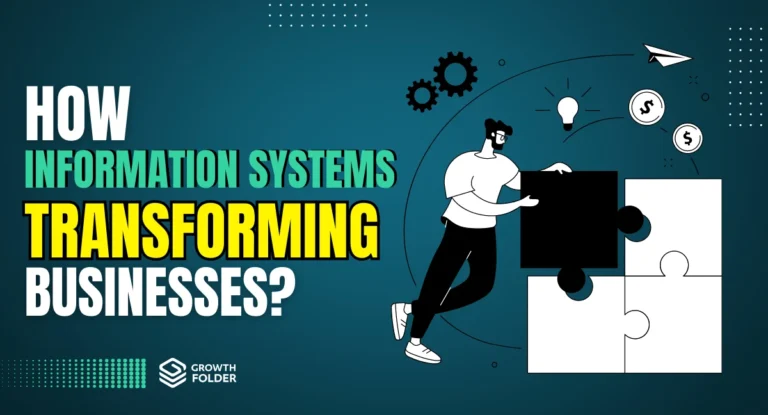
Gone are the days of sending smoke signals or pigeon posts to communicate with your colleagues in the workplace.
These days, technology has taken over, and it’s revolutionizing the way we do business.

But exactly what is the role of technology in business communication?
And how can you leverage these tools to maximize our efficiency and productivity?
In this article, we’ll take a closer look at how technology has impacted business communication, including the benefits and challenges associated with these changes.
Whether you’re a small business owner or a large corporation CEO, understanding the role of technology in business communication is crucial to your success.
The Evolution of Business Communication

Communication has always been a crucial aspect of business, but the ways in which we communicate have changed drastically over time.
In the past, handwritten letters, telegrams, and face-to-face meetings were the primary means of communication. These forms of communication were rather slow and could take days, if not weeks, to be received and responded to.
I can still remember the postcards that we used to buy once. For some, it was a hobby to collect postcards from different places.
The invention of the telephone in the late 19th century revolutionized the way we communicate with each other. Forget businesses, it was kind of unreal for everyone to think that we can actually hear someone’s voice sitting miles away; crisp and clear!
The introduction of radio and television in the 20th century further transformed business communication by enabling companies to reach a much wider audience with advertisements and marketing messages.
However, with the advent of the internet in the 1990s, we now have a vast array of tools at our disposal, from email to instant messaging, video conferencing, and social media.
The rise of smart mobile solutions and cloud computing has made it possible for employees to work remotely. The COVID-19 pandemic has further accelerated this trend and has now become the new normal.
Technological advancements have indeed transformed the way we communicate and make it easier than ever before to share information and collaborate with others.
The Benefits of Technology in Business Communication

The use of technology in business communication has brought numerous benefits. These benefits include:
✅ Improved Efficiency:
With technology, businesses can communicate faster and more efficiently than ever before. Emails and instant messaging allow for quick, real-time communication, and video conferencing makes it possible to have face-to-face meetings with people from all over the world.
This reduces the time and cost of travel and increases the speed of decision-making.
Moreover, using software tools such as project management software or customer relationship management (CRM) systems help businesses to organize and manage tasks, track progress, and stay on top of deadlines.
Automation of repetitive tasks such as email follow-ups, appointment scheduling, and data entry, frees up employees to focus on more value-added activities.
✅ increased productivity:
Technology has made it possible for teams to collaborate in real time, regardless of their location. This increased collaboration leads to better communication and increased productivity.
For example, consider a team of designers working on a project. They can use project management software to collaborate on design concepts and share feedback in real time.
They can also use communication tools such as instant messaging and video conferencing to discuss design ideas, ask questions, and provide updates on the project’s progress.
✅ Cost Savings:
There is no doubt that using technology in business communication can result in significant cost savings for organizations.
For example, consider a company that needs to hold a meeting with employees and clients located in different parts of the world.
Without technology, the company would have to pay for travel expenses, including airfare, hotel accommodations, and meals, which can quickly add up.
With video conferencing, however, the meeting can take place remotely, eliminating the need for travel and the associated costs.
Additionally, new startups and small businesses with limited resources can take benefit of cloud-based storage and collaboration tools which reduce the need for physical storage space and expensive hardware.
✅ Enhanced Customer Service:
Technology has made it possible for businesses to provide quick and better customer service.
Chatbots and social media allow customers to interact with businesses in real-time, getting the help they need quickly and efficiently.
By responding to customers in real-time on social media, companies can address issues quickly and show customers that they value their feedback and opinions.
For example, consider a company that uses a chatbot on its website to handle customer inquiries.
The chatbot can answer common questions, provide information about products or services, and help customers navigate the website.
If the chatbot is unable to answer a question, it can transfer the customer to a live representative.
By using a chatbot in this way, the company can provide 24/7 support to its customers without the need for human staff to be available at all times.
The Challenges of Technology in Business Communication

While there are many benefits to using technology in business communication, there are also challenges. These challenges include:
⛔ information overload:
One of the main challenges of technology in business communication is the potential for information overload.
When employees are constantly bombarded with communication, it can be challenging for them to prioritize tasks and stay productive. This can lead to decreased efficiency, increased stress levels, and a decline in the quality of work.
Imagine an employee who starts their workday by checking their email inbox. They find dozens of messages, including new project updates, requests for information, and marketing materials.
The employee starts the day by sorting through the emails, responding to the most urgent ones, and flagging others for later follow-up.
As the day progresses, message notifications on apps like Slack, Microsoft Teams, and WhatsApp await. In the midst of all this communication, we are expected to prepare a presentation for a client meeting the following day.
In scenarios like these, we experience information overload, which hampers overall productivity.
⛔ security risks:
One of the significant challenges of technology in business communication is the potential security risks that come with using digital communication tools.
With the rise of cyber threats (hacking and phishing attacks), companies must take steps to protect their sensitive data and confidential information from falling into the wrong hands.
For example, a company might use email to send sensitive information, such as financial data or confidential project updates.
If the email is not encrypted or if the recipient’s email account is compromised, the information could be intercepted by a third party.
Similarly, if a company uses messaging apps to communicate with employees or clients, there is a risk that the app could be hacked or that an employee’s account could be compromised, leading to the leak of sensitive information.
⛔ miscommunication:
With the rise of digital communication tools, it can be easy for messages to be misinterpreted or for key details to be missed.
For example, an employee might send an email to a client that is intended to be informative, but the client could misinterpret the tone or miss important details.
Similarly, a message sent through a messaging app might not convey the intended meaning or could be misread due to autocorrect errors or typos.
Furthermore, if there are language barriers, cultural differences, or technical jargon involved, there is an even higher chance of miscommunication.
This can lead to misunderstandings, confusion, and potentially, lost business opportunities.
To address this challenge, it’s important for organizations to provide training on effective communication, including strategies for ensuring clear and concise messaging.
Additionally, companies can establish guidelines for the use of digital communication tools, including the appropriate tone, formatting, and usage of emoticons and abbreviations.
⛔ overreliance on technology:
While technology has many benefits, overreliance on it can negatively impact communication in the workplace.
This can cause communication problems when technology fails, disrupt team dynamics, and limit creativity and innovation.
For example, if an organization relies solely on email to communicate with clients and partners, they may miss out on valuable opportunities for face-to-face communication or other forms of direct communication.
This overreliance on digital tools could lead to a decline in the quality of relationships with clients and partners, as well as a loss of trust and rapport.
To avoid overreliance, companies should balance technology and human interaction, promoting face-to-face communication, using video conferencing, and having backup plans in place.
By doing so, they can maximize the benefits of technology while avoiding its potential pitfalls.
Overcoming the Challenges of Technology in Business Communication

To overcome the challenges of technology in business communication, it’s important to take the following steps:
✅ limit distractions:
One effective way to overcome the challenges of technology in business communication is to limit distractions.
With the constant influx of emails, messages, and notifications, it can be difficult to focus on important tasks and communicate effectively.
Let us take the example of an employee who is constantly distracted by email notifications and messages from social media apps.
Despite their best efforts to stay focused, these distractions can make it difficult for them to complete important tasks or communicate effectively with colleagues.
To overcome this challenge, they could turn off notifications for non-essential apps during designated work times and establish clear guidelines for communication with colleagues.
✅ increase security measures:
With the increasing prevalence of cybersecurity threats and data breaches, it’s essential for organizations to increase their security measures when communicating electronically.
By implementing robust security measures, we can protect sensitive information, prevent unauthorized access, and mitigate the risks of security breaches.
To increase security measures, our first and foremost measure should be to use secure communication channels and tools, such as encrypted messaging services or virtual private networks (VPNs). These tools can help protect sensitive information and prevent unauthorized access.
Additionally, we can implement strong password protocols, regularly update software and antivirus programs, and conduct regular security audits to identify potential vulnerabilities.
✅ clarify messages:
The risk of miscommunication may sound un-harming and hilariously simple, yet it may result in big blunders.
This can occur due to various factors, such as language barriers, cultural differences, or differences in communication styles.
To overcome this challenge, we can take steps to clarify messages and ensure that they are being received as intended.
This can include using clear and concise language, using proper grammar and punctuation, avoiding jargon or technical terms when communicating with non-experts, and actively seeking feedback and confirmation from the recipient.
Additionally, we could use visual aids or diagrams to help convey complex or abstract information; like using flowcharts or diagrams to explain the steps of a process, or use illustrations to show the design of a product.
✅ provide training:
If we intend to aim for the root of the problem, the best way to overcome the challenges of technology in business communication is to provide training to team members.
This can include training on how to use specific communication tools or platforms, as well as training on effective communication skills and strategies.
For example, consider a small business that has recently adopted a new messaging platform for internal communication.
While some employees are comfortable using the new platform, others are struggling to use it effectively, and this is leading to delays and miscommunications.
To overcome this challenge, the business could provide training to its employees on how to use the messaging platform effectively.
This could include training on the platform’s features, best practices for messaging, and tips for effective communication.
✅ Use Multiple Communication Channels:
Don’t rely on a single communication tool. Period!
In general, it is not going to be a necessity. But when things go south, you would thank god for having such a backup.
Using multiple communication channels can help to ensure that messages are delivered in a timely and effective manner, and can also help to reduce the risk of miscommunication.
Additionally, using multiple channels can help to ensure that important messages are not missed or overlooked, as they may be if they were sent through a single channel.
Use a combination of email, video conferencing, and instant messaging to ensure that everyone is on the same page and informed.
Best Practices for Technology in Business Communication

To make the most of technology in business communication, consider the following best practices:
✅ Use appropriate tone:
Make sure to use an appropriate tone in all communication, whether it’s email, instant messaging, or video conferencing. Be professional and courteous, and avoid sarcasm and humor that could be misinterpreted.
✅ Avoid overuse:
Don’t rely too heavily on technology to communicate. Face-to-face meetings and phone calls are still important, especially for more sensitive or complicated issues.
✅ Be clear and concise:
Make sure all messages are clear and concise. Keep emails and instant messages brief and to the point, and avoid rambling or irrelevant information.
✅ Consider time zones:
If you’re communicating with people in different time zones, make sure to be aware of their schedules and avoid sending messages or scheduling meetings at inconvenient times.
✅ keep it professional:
Remember that all communication is a reflection of your business. Keep it professional and avoid using slang or overly casual language.
FAQs
Q1. What technology is best for business communication?
There are many different tools available, including email, instant messaging, video conferencing, and social media. The best technology will depend on your business needs and the preferences of your team.
Q2. How can I keep my communication secure?
Make sure to use secure communication tools, such as encrypted email and video conferencing services. Use strong passwords and two-factor authentication to protect sensitive information.
Q3. How can I avoid miscommunication?
Take extra care to ensure that messages are clear and concise. Use appropriate tone and avoid acronyms and jargon that could be misinterpreted.
Conclusion – What is the role of technology in business communication?
In conclusion, the role of technology in business communication is rapidly evolving and has the potential to transform the way businesses operate and communicate with employees and customers alike.
By following best practices, providing training, and using a variety of communication channels, businesses can use technology to their advantage.
While there are certainly challenges that must be addressed, the benefits of embracing technology for communication are clearly on the winning side.
By prioritizing employee training, strong security protocols, and a balance between digital and human interaction, businesses can stay competitive, foster international relationships, and ultimately, achieve their long-term goals.






